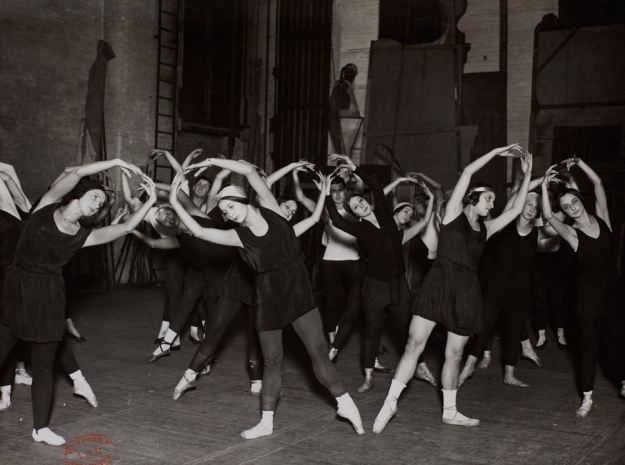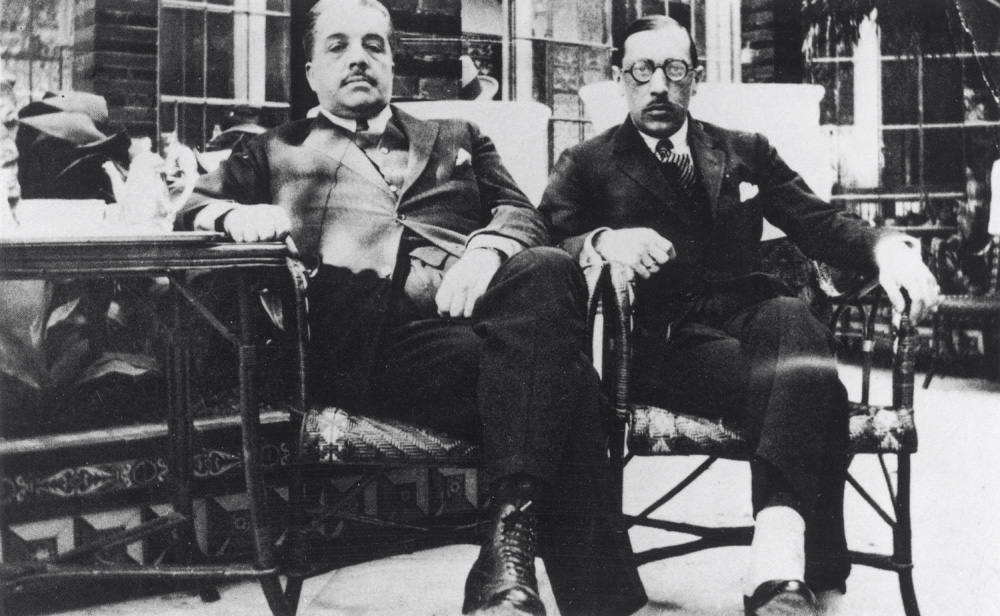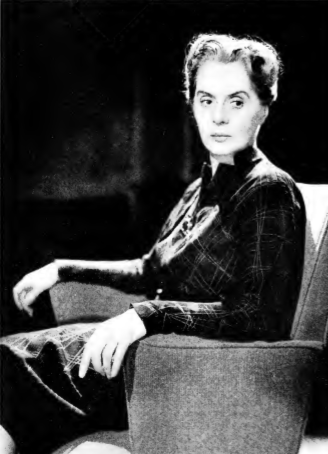Ninette De Valois: The Godmother of Ballet
It is the year 1927 and I am sitting in the dark vestibule of the Festival Theatre in Cambridge. I am listening to a rich Irish voice that seems to intone a request that I should come to Dublin and produce for the Abbey Theatre. The voice belongs to William Butler Yeats, who has just witnessed a verse play of Gordon Bottomley’s and some dance creations of my own. . .
It would seem that if I should return to Ireland at his impressive bidding (made to me in a light so dim that the speaker’s features were not clear) I would work among those people whose efforts to establish the Irish Theatre were in progress at the time that I struggled with an Irish Jig in a farmhouse at the foot of the Wicklow Hills.

So writes Ninette de Valois in her memoir Come Dance with Me. Her career as a dancer and company director spans out from the humble beginnings of her ‘Irish jig’. She was born Edris Stannus near Blessington in 1898 and had an extremely comfortable upbringing while in Ireland as well as in England, where at the age of seven she took her first dance lessons. Her first real engagement with dance in Ireland was at the request of Yeats, as she recounts above. It was not her first contract with a company designed for specific nationalistic representations. De Valois is also the linking chain between the Irish National Theatre in the Abbey, and the greatest representation of Russian culture in Western Europe during the 20th century: The Ballet Russes, a tour-de-force driven by its impressario Sergei Diaghilev. However it is not for these feats that she is most remembered. It is her own establishment and achievement of creating an indigenous theatre in England that she is renowned for. Her direction and management of the Vic-Wells school and company that earned her the title of ‘godmother’ of English ballet.

By the age of 21 de Valois had been a principal dancer on West End productons and danced with the resident company at the Royal Opera House. In autumn of 1921 she had her first contact with the Ballet Russes. In the Covent Garden Opera House she joined some out-of-work Diaghilev dancers for a production under Leonide Massine, the Russian choreographer responsible for the first ever symphonic ballet. Afterwards de Valois returned to her West end productions. However, exhausted and no longer satisfied with such work, when an opportunity came from Paris she took it. She joined Diaghilev’s company in September 1923.
From its beginnings in 1909, it had the resource of Imperial Ballet trained dancers, the creme de la creme, a proficiency no longer known in Europe, especially since French standards had been slipping since the 1830s. Arguably, it was the only company Europe keeping ballet innovative and a respected art form, rather than the frivolous accompaniment to opera, living off former glories. Furthermore, the success of Diaghilev’s 1906 Exhibition of Russian Art at the Petit Palais, had developed a Parisian palate for all things Russian.[pullquote] The plays centred on the medium of dance, a subject which Yeats knew little about. Furthermore he detested contemporary ballet.[/pullquote] In other words, Diaghilev’s Ballet Russes would have been seen as a step, indeed, a grand jeté in the right direction for de Valois’ career.
Diaghilev directed his dancers, choreographers, artists, musicians and composers always with his compass pointing to Russia, its classical themes and folklore. De Valois notes that her employer had ‘as a result of his upbringing and his country’s theatrical history… a deep rooted veneration of the Orthodox’. Despite its association with the modern art movement, it would seem that the Ballet Russes impresario deepest wish was to be a national ballet company.
Its famed experimentalism was thanks to collaborators from the Paris art scene which; over the 20 years of the Ballet Russes composers such as Igor Stravinsky, Frederic Chopin, Robert Schumann, Pyotr Ilyich Tchaikovsky, Claude Debussy, Richard Strauss and Erik Satie contributed on multiple occasions; Leon Baskt designed sets and costumes during the early of the company, with Hentri Matisse and Pablo Picasso doing the same in 1920; Gabrielle Chanel did costumes in 1924 and again, as ‘Coco’ in 1928.

It goes without saying that Sergei Diaghilev had connections and used them. His upbringing (his parents owned a vodka distillery) accustomed him to moving in upper classes circles, gathering benefactors and sponsors for the company’s means. With his keen eye he plucked talents from the Paris art scene and fostered their careers, nurturing them under the auspices of the Ballet Russes. In him, management administration was elevated to a creative art. Though the Ballet Russes collaborated with and contained many revered persons, no one managed to upstage the man who was never on stage.
His death in 1929 subsequently killed the Ballet Russes. The company’s property was divvied up between its creditors and the dancers were scattered. Other company’s sprung from its ashes; the Original Ballet Russe and the Ballet Russe de Monte Carlo, though neither had the belle epoch of the original nor, or course, the impresario himself. ‘What happens,’ Ninette de Valois writes, ‘when we find the connoisseur, the creator and the scholar in one person? I say that we have a wholly unusual mind at work in a certain creative form- and that is how I see Diaghilev in retrospect.’

Diaghilev’s role went much further than gathering talents and finances for his company. His achievement was the close integration of story, music, choreography and design. He created spectacles, the overall impact surpassing the parts. As Lynn Garafola puts it in Diaghilev’s Ballet Russes: ‘There was never quite a parallel circumstance in the history of the arts in which the tastes and personal influence of one person had such an effect on the future of the world of art. [pullquote]The Vic-Wells ballet became ‘a ballet theatre which can be honoured and supported by the rich and understood and lived on by the people and that true bourgeoisie that makes up the greater part of any country’s population. [/pullquote]
Ninettes de Valois spent three years in the Ballet Russes. She was promoted to a soloist and appeared in productions such as Les Biches and Le Train Bleu. She refers to the Diaghilev’s dancers as ‘succeeding in portraying a complete Russian picture; in style they had their classical tradition of ballet… in presentation they had their own Russian tradition of dance and folklore in its limitless richness or pattern in subject matter’. This comment would certainly have pleased Diaghilev, and shows the respect de Valois had for his attempted Russian ballet in Europe. Later in her career she claimed everything she knew about how to run a ballet company she learned from working for Diaghilev, knowledge she no doubt used upon returning to Ireland at the request of The Abbey Theatres’s own impresario, William Butler Yeats.
De Valois had been working at the Festival theatre in Cambridge when Yeats made his proposal. Impressed by one of her ballets, Yeats had his mind made up that de Valois would return to Ireland and work to establish the Irish theatre.
‘…he would have a small school of ballet at the Abbey and I would send over a teacher. I would visit Dublin every three months and produce his plays for dancers and perform in them myself; thus, he said, the poetic drama of Ireland would live again and take its rightful place in the Nations own Theatre.’
And it was thus. De Valois divided her time between England and Ireland, spending just seven weeks of the year in the Abbey theatre training a small group of dancers for Yeats’ disposal.
The Abbey School of Ballet’s raison d’etre was to provide dancers for the plays Yeats had written. His Four Plays for Dancers were the school’s reportoire: At the Hawk’s Well, The Only Jealousy of Emer, The Dreaming of the Bones and Calvary. Written in 1921, six years prior to de Valois’s collaboration with Yeats, this collection was most unusal for the playwright. The plays centred on the medium of dance, a subject which Yeats knew little about. Furthermore he detested contemporary ballet. The motive comes from an entirely different interest.

Yeats was inspired by Japanese Noh theatre and sought to create a type of dance action hybrid with a distinctly Celtic overtone. At the Hawk’s Well was the first attempt at combining the elements of Noh with a play in the English language. After the 1916 performance Yeats said:
‘Perhaps I shall turn to something else now that our Japanese dancer, Mr Itow, whose minute intensity of movement in the dance of the hawk so well suited our small room and private art, has been hired by a New York theatre, or perhaps I will find another dancer.’
The latter he did, with Ninette de Valois. Once again, she was engaged with a director who wished for a distinct representation of his country in his work. The draw for her to accept Yeats’ request, posits Richard Allen Chambers, author of Collaborations, was that, like Diaghilev, Yeats conceived performance as a united aesthetic. De Valois restaged and recreated the choreography of that play and Yeats reworked ‘The King of the Great Clock Tower’ and ‘The Only Jealousy of Emer’ for her to interpret into dance mime too.

Source
Cave cites ‘Noh’s principles of refined stylisation and, above all, its profound discipline’ as among the qualities of the form to which Yeats was attracted. Qualities equally evocative of those of ballet.’ Thus the partnership flourished. De Valois, using the masks and mimetic movement of Noh, developed a style that suited Yeats’ explorations of the Japanese theatre. Each of the four productions attempted a seamless incorporation of music and movement. Though her time at the Abbey was short, de Valois contribution was in no doubt appreciated. After six years the school closed, its purpose not necessitating the budgetary requirements.
Why focus Dame de Valois’ career around two men? It is not at all to suggest that her success are indebted to Yeats and Diaghilev, though of course she herself admits the learning advantage they gave her. It is less about the men than about the institutions they failed to set up. Something which de Valois herself achieved.
Diaghilev had the resources of so much of great Russia in Paris. The exiled Russian artist community in Paris during the Bolshevik Revolution was not enough to fulfill his attempt at a great Russian ballet company. Yes, he had gained a wonderful and extraordinary reputation. But he did not have a popular following. Theatre’s were rarely full for Ballet Russes performances. From its first season the company was in debt.[pullquote]Theatre’s were rarely full for Ballet Russes performances. From its first season the company was in debt.[/pullquote]
Yeats, his Abbey theatre and the Irish Literary Revival always received critical approval but little public interest. He never found his ‘uncorrupted and imaginative audience trained to listen with a passion for oratory’. Dame de Valois however, achieved her goal, creating an indigenous English ballet and a public appetite for ballet never seen before in England. In her words, the Vic-Wells ballet became ‘a ballet theatre which can be honoured and supported by the rich and understood and lived on by the people and that true bourgeoisie that makes up the greater part of any country’s population‘. Yes, de Valois created a little known link between the Ballet Russes and Ireland. It is a fantastic contribution for Ireland but perhaps eclipsed for de Valois by her ballet across the sea.
